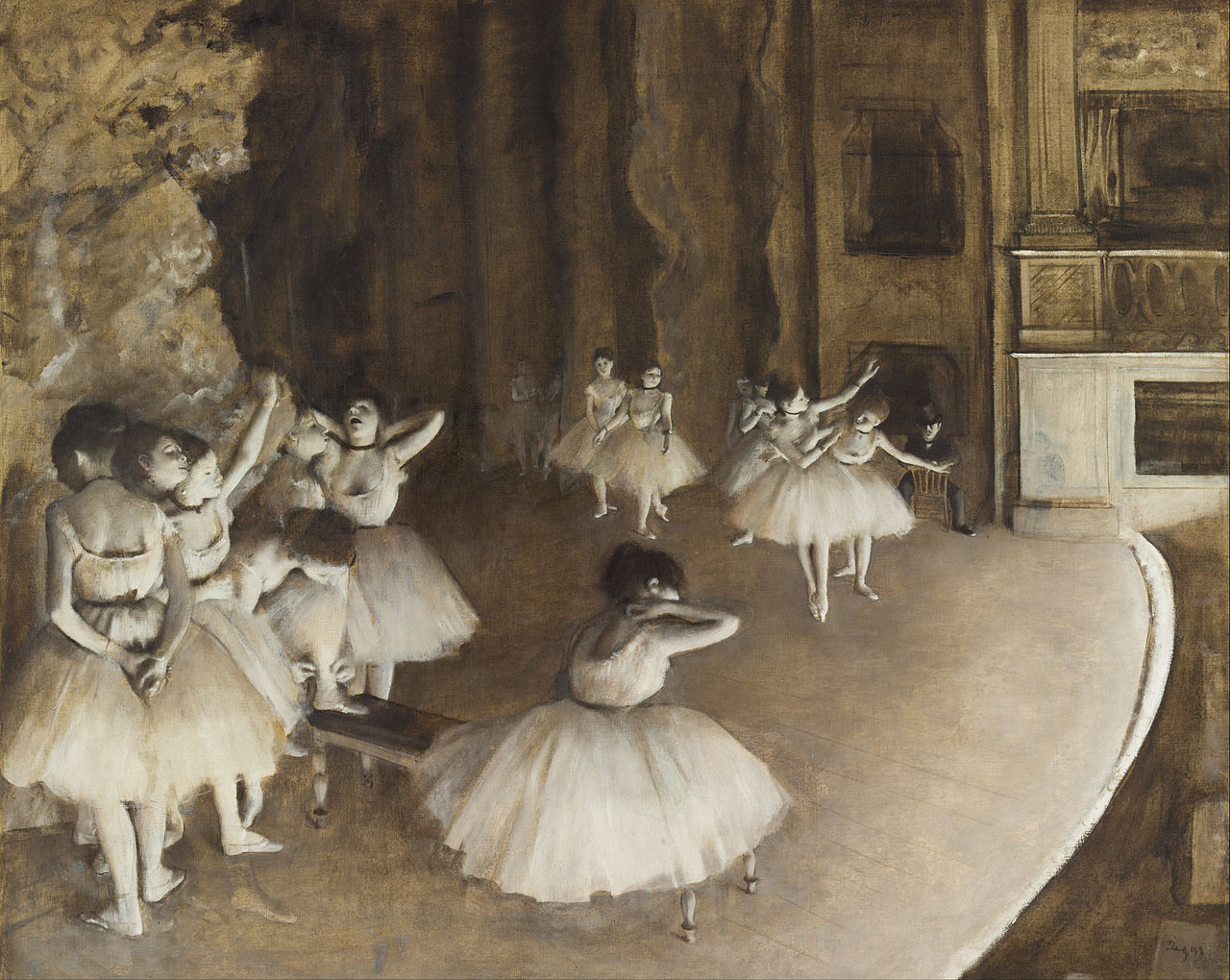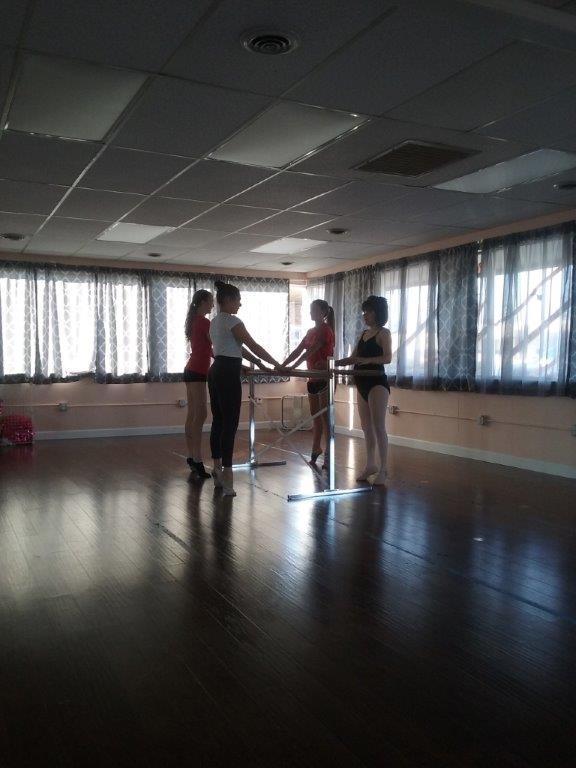In a related guest post for Professor Carol several weeks ago, we shared our family’s experience exploring the arts through opera: Starting Small: Opera. This week we focus on the world of ballet. If ever we needed something lovely in our lives, now is the time. The good news is that we can start small.

I entered the loveliness of ballet unexpectedly as a young mother of twin toddlers with autism and a “developmental coordination disorder.” My toddlers received physical therapy, but neither could jump, walk fluidly, or control their bodies like other children their age. As they grew I wanted something dedicated not merely to milestones but also to grace, poise, and self-control.
A nearby ballet teacher offered a class for young children. Designed not for performance but merely for the joy of movement, the class taught children to leap “from one foot to the other” over a stuffed animal placed in the middle of the mirrored dance studio. Graceful music filled the air, as my daughter learned to leap, skip, and pause with increasing control and improved posture. She loved the class.
To encourage her we found little books. She remembers them all today and shares her favorites:
- Our Ballet Class by Stephanie Riva Sorine
- Little Ballerina by Dorothy Grider
- The Little Ballerina by Sally Grindley

When we moved and a new studio required a demanding performance schedule not well suited to my daughter’s fragile stamina, we found a delightful way for her to learn at home: I’m a Ballerina Now with Rosemary Boross. We read together atop my bed Ballet Shoes, Dancing Shoes, and Theater Shoes, a fiction series Boross recommends (but encourages avoiding the movie counterparts).
My biggest mistake during these early years occurred when introducing Michelle to her first live ballet. A small theater company had announced dates for The Nutcracker. I was prepared for a delightful afternoon with Michelle and her little friend Catelyn eagerly attending in nice dresses. As we settled in, the dancers began, the music played, and Catelyn was beaming. Michelle gradually appeared more disgruntled and annoyed. Her arms crossed and she slumped in her seat. When the lights came up at intermission, I asked what was bothering her. “They never SAID anything,” she declared with a shrug. “I kept waiting for WORDS to come out of their mouths.”
I had not prepared her for the obvious. For Michelle, without words the story was missing! Her little friend, by contrast, was won over. (Today Catelyn is a young woman who majored in theater and designs sets, performs, and travels in small productions across the country.)
Your child may need only brief preparation, such as, “The story will be told with the performer’s bodies and faces, so you will need to watch closely. They will not say anything, but they will be telling you a story.” This might have been sufficient for my daughter, or she might have benefited from more intentional preparation. Looking back, here are some suggestions for helping any child become comfortable perceiving meaning without spoken dialog:
- Kids on Stage Card Game
- As an academic bonus, this can be played with spelling words, such as laughter, swimming, sweeping, walk; or Latin words, such as ambulo, porto, laudo (I walk, I carry, I praise).
- Photo Story Sequence Cards by SkillEase, Carson Dellosa, or Spark Cards, to help the child order a story line sequentially by pictures.
Another form of preparation is simply to read the picture book prior to the performance. You might read the story and then retell in a round-robin fashion to impress upon the memory:
- The Nutcracker, Janet Schulman with audio, told by actress Claire Bloom with Tchaikovsky’s musical score, or The Nutcracker retold by Stephanie Spinner; includes a fully orchestrated audio score. [Prof. Carol also recommends the Maestro Classics recording narrated by Jim Weiss.]
- Sleeping Beauty beautifully illustrated by Mahlon F. Croft.
- The Tale of the Firebird by Gennady Spirin.
When gently prepared, nothing compares to the thrill of the ballet performed live before your eyes. Michelle and I have been enthralled by several ballets since that early experience.
She now recommends these as introductions:
- Sleeping Beauty, Tchaikovsky, based on the French tale by Charles Perrault
- Cinderella, Prokofiev, based on the French tale by Charles Perrault
- The Nutcracker, Tchaikovsky, based on E.T.A. Hoffmann’s story
- Swan Lake, Tchaikovsky, based on a classic fairy tale
Older children and teens may appreciate these:
- Firebird, Stravinsky, based on a Russian folk tale
- Giselle, Adam, a romantic French ballet
- Coppélia, Delibes, a comic French ballet
- Romeo and Juliet, Prokofiev, based on Shakespeare’s play
Small dance companies or classical ballet schools may perform these for affordable pricing. Our favorite is the St. Louis Ballet Company only an hour away. Michelle often asks for ballet tickets for her birthday and recommends this book for anyone who wants to learn more: 101 Stories of the Great Ballets: The Scene-by-Scene Stories of the Most Popular Ballets Old & New by George Balanchine and Francis Anason.
After an obligatory year away last year, she and I returned to the ballet in 2021. Tears filled our eyes at the elegance, the beauty, and the wordless loveliness. We did not know how much we had missed sharing a ballet performed in person. Today Michelle understands that ballet is a uniquely and perfectly exquisite way to tell a story. We just needed to start small.
Cheryl Swope is the author of Simply Classical: A Beautiful Education for Any Child and creator of the Simply Classical Curriculum (Memoria Press) for children with autism, ADHD, Down syndrome, and learning disabilities. Cheryl and her family live in a quiet lake community in southeast Missouri. SimplyClassical.com




I homeschooled our children and have been advising and encouraging homeschoolers for over 30 years. I frequently recommend the book “Simply Classical” to moms of homeschoolers. Her overview of an innumerable number of programs is amazing. Whether you have a special needs child or one that has his or her own unique needs and talents – as each of our children do – “Simply Classical” is well worth reading for homeschooling families.